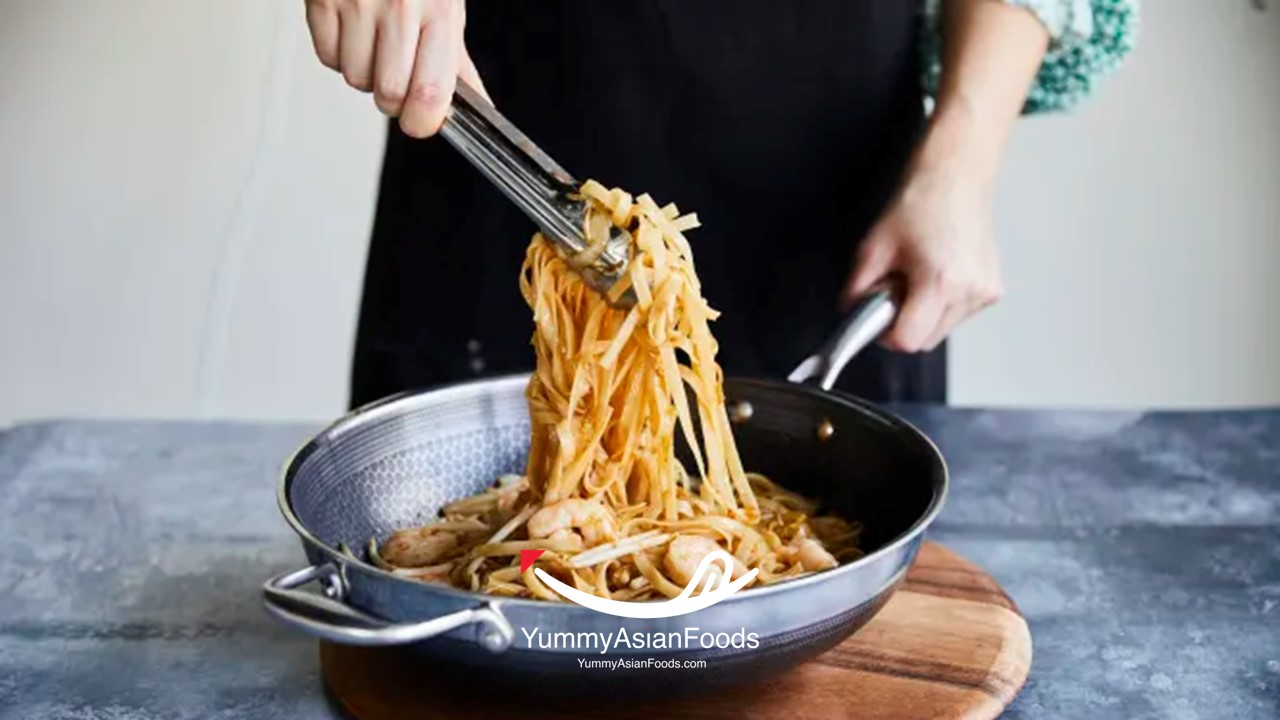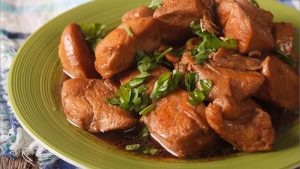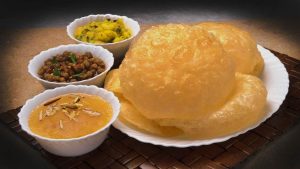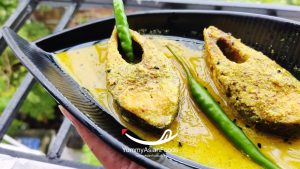Table of Contents
ToggleThis is a quintessential Thai dish that has taken the world by storm with its perfect balance of sweet, tangy, and savory flavors. Whether you’re a seasoned chef or a kitchen novice, mastering the art of cooking Pad Thai is an essential skill for any food enthusiast. In just five simple steps, you can recreate this iconic dish in the comfort of your own home, transporting your taste buds to the bustling streets of Thailand with every bite. Join us on a culinary journey as we unlock the secrets to preparing the most popular Thai dish, Pad Thai, and impress your friends and family with your newfound culinary prowess.
An Overview of Pad Thai Dish
Pad Thai, the iconic and delectable dish from Thailand, holds a special place in the hearts of food enthusiasts worldwide. This vibrant and flavorful noodle dish perfectly encapsulates the unique blend of sweet, sour, salty, and spicy flavors that Thai cuisine is renowned for. Made with stir-fried rice noodles, eggs, tofu or shrimp, bean sprouts, peanuts, lime wedges, and a savory sauce made from tamarind paste and palm sugar, Pad Thai is a symphony of textures and tastes that dance on your palate with each bite.
The origins of this dish can be traced back to the 1930s when it was introduced as a nationalistic culinary creation by then-Prime Minister Plaek Phibunsongkhram to promote Thai nationalism. Over time, this humble street food delicacy has evolved into an internationally beloved dish that can be found on menus in upscale restaurants as well as bustling night markets. Despite its popularity outside Thailand, nothing compares to savoring an authentic plate of freshly-made Pad Thai under the warm glow of street lights in Bangkok or nestled at a local eatery by the riverside, where every mouthful whispers tales of tradition and innovation intertwined in perfect harmony.

Here are 5 Simple Steps to Cook Pad Thai:
1. Pad Thai Ingredients: List and quantities needed
Pad Thai is a flavorful and aromatic dish that captures the essence of Thai cuisine. To create this iconic dish, you will need a carefully curated list of ingredients in specific quantities to achieve an authentic and delicious taste sensation. The key components include rice noodles (around 200 grams), which serve as the base of the dish, giving it its signature chewy texture.
Next is the protein source for your dish—traditional recipes call for around 150 grams of chicken, shrimp, or tofu to add depth and heartiness to the meal. Other essential ingredients include garlic (2-3 cloves finely minced), shallots (2 small ones finely chopped), and eggs (1 or 2, depending on personal preference), which play a crucial role in flavor development and texture improvement.
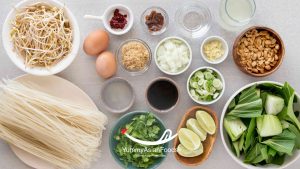
2. Pad Thai Preparation: Soaking noodles, chopping vegetables, preparing sauce
Once you’ve gathered all your ingredients for Pad Thai, the first step is to soak the rice noodles until they are pliable but still slightly firm. This process helps ensure that your noodles will have that perfect chewy texture when cooked. While the noodles are soaking, take this time to finely chop up a colorful array of vegetables, like bell peppers, carrots, and scallions. These vegetables not only add vibrant colors to your dish but also provide a delightful crunch with each bite.
Next, it’s time to prepare the flavorful sauce that will tie all the components of Pad Thai together harmoniously. A combination of tamarind paste, fish sauce, palm sugar, and lime juice creates a complex yet balanced flavor profile that is typical of traditional Thai dishes. Adjusting the ratios of these ingredients allows you to customize your sauce based on personal preferences, whether you prefer it tangy or sweet with just a hint of heat from chili flakes. Experimenting with different variations can elevate your experience and make each dish uniquely yours.
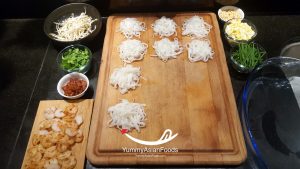
3. Pad Thai Cooking Process: Frying ingredients in a wok
As the sizzle of the wok fills the air, there is a sense of anticipation for the flavors that will soon come alive in Pad Thai. Frying the ingredients in a wok is a crucial step in achieving the distinct taste and texture of this beloved Thai dish. The high heat allows for a quick cooking process, ensuring that each ingredient retains its freshness and crunchiness.
The dance between oil, garlic, tofu or chicken, bean sprouts, and shrimp in the wok creates an aromatic blend that forms the backbone of Pad Thai’s flavor profile. Stirring constantly with skillful precision, one must be attentive to prevent any ingredient from overcooking while ensuring that all elements harmonize perfectly. This stage not only infuses each ingredient with bold flavors but also adds depth and complexity to every bite of this iconic dish.
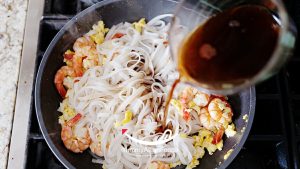
4. Pad Thai Assembly: Combining noodles, sauce, and toppings
Once you have cooked your noodles to perfection and prepared the flavorful sauce, it’s time for the exciting part—assembling your Pad Thai dish. The key to a truly delicious cuisine lies in the artful combination of noodles, sauce, and toppings. Start by tossing the cooked noodles in a generous amount of the tangy-sweet sauce until each strand is well coated.
Next, carefully arrange your choice of toppings on top of the saucy noodles. From crunchy bean sprouts and peanuts to fresh cilantro and lime wedges, each ingredient adds its own unique flavor and texture to this iconic dish. Don’t be afraid to get creative with your toppings. This cuisine is versatile enough to accommodate a variety of additions, allowing you to customize your meal according to your taste preferences. With each bite offering a harmonious blend of savory, sweet, sour, and spicy notes, the assembly process is where you truly bring this classic Thai favorite to life.
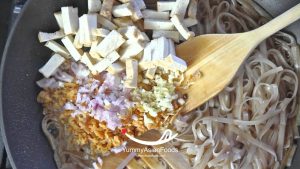
5. Pad Thai Garnish and Serve: Adding final touches before serving
Now that your Pad Thai is cooked to perfection, it’s time to add the final touches before serving. Garnishing plays a crucial role in enhancing the flavors and presentation of this classic dish. One popular garnish is a sprinkle of crushed peanuts, which adds a delightful crunch and nutty flavor.
Fresh herbs like cilantro or Thai basil can also be used to bring a burst of freshness and aroma to your dish. Finally, don’t forget the lime wedges on the side; a squeeze of lime juice just before digging in can elevate the overall taste profile of your Pad Thai. These simple yet impactful garnishes are what take your food from good to great, making each bite an unforgettable experience for your taste buds.
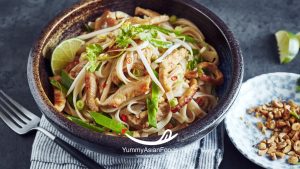
History of this Famous Dish
Dating back to the 1930s, Pad Thai has a fascinating history intertwined with Thailand’s cultural influences and economic development. Legend has it that during World War II, the Prime Minister of Thailand promoted Pad Thai as a national dish to boost the country’s food supply and instill a sense of nationalism among its people. The creation of this iconic dish symbolizes resilience and adaptability in times of hardship, making it more than just a simple stir-fry noodle dish.
As time passed, Pad Thai evolved from its humble origins to become one of the most beloved and popular dishes in Thailand and around the world. Its unique blend of flavors—sweet, salty, sour, and spicy—captivates taste buds and leaves an unforgettable impression on those who indulge in its deliciousness. From street vendors to high-end restaurants, Pad Thai continues to be a staple in Thai cuisine, showcasing the country’s rich culinary heritage and culinary diversity.
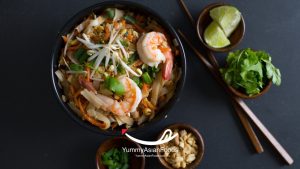
Traditional Pad Thai Ingredients and Substitutions
Traditional Pad Thai is a harmonious blend of complex flavors that come from a unique set of ingredients. Some key components include tamarind paste for that tangy kick, fish sauce for umami depth, and palm sugar for sweetness. Fresh rice noodles give the dish its signature chewy texture, while ingredients like tofu, shrimp, or chicken provide protein and body to the recipe.
For those looking to make Pad Thai but missing some ingredients, there are several effective substitutions available. For instance, soy sauce can be used as an alternative to fish sauce, while lime juice mixed with sugar can mimic the flavor of tamarind paste. If palm sugar is not on hand, regular granulated sugar can be a suitable replacement without compromising too much on taste. Experimenting with these substitutions can lead to unique twists on this beloved classic dish while still honoring its origins in Thai cuisine.
Making traditional Pad Thai at home allows you to customize it to your preferences and dietary needs easily. Whether sticking closely to the authentic recipe or experimenting with substitutions based on what you have available, embracing the core flavors and textures of this iconic dish will ensure a delicious culinary experience that pays homage to Thai tradition while accommodating individual tastes and kitchen resources.
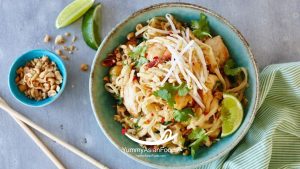
Cooking Methods and Tips
When it comes to cooking Pad Thai, achieving the perfect balance of flavors is key. One lesser-known tip is to soak the rice noodles in lukewarm water for about 20-30 minutes before stir-frying them. This ensures they cook evenly and don’t clump together, resulting in a delicately textured dish.
Another important aspect to consider is the order in which you add ingredients while cooking Pad Thai. Start by stir-frying your protein choice along with garlic and shallots first for that rich umami base. Then add your vegetables and soaked noodles, followed by the sauce towards the end to prevent it from becoming too thick or overly salty. Following these techniques will help elevate your Pad Thai game and create a truly authentic and delightful dish that captures all the vibrant flavors of Thailand.
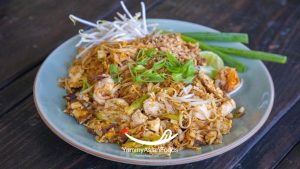
Variations and Regional Differences
Regional differences play a significant role in the variation of Pad Thai across Thailand. In the southern regions, for example, seafood such as shrimp or squid is often used as the main protein in Pad Thai dishes, adding a unique coastal twist to the classic recipe. On the other hand, in northern Thailand, you may find Pad Thai made with duck meat or pork, reflecting the region’s diverse culinary influences.
Moreover, variations in ingredients and seasoning also contribute to distinct regional differences. In some parts of central Thailand, tamarind paste is used predominantly for its tangy flavor profile, while in northeastern regions, a more pronounced sour taste from ingredients like pickled radish takes center stage. Understanding these subtle yet crucial variations enhances not only one’s appreciation for Pad Thai but also sheds light on the rich culinary tapestry that defines Thai cuisine.
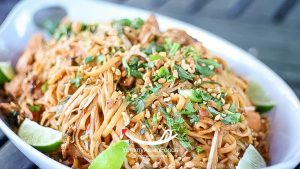
Global Appeal: Spread of Pad Thai worldwide
As the world becomes increasingly interconnected, it’s no surprise that the delightful flavors of Pad Thai have spread far beyond the borders of Thailand. This iconic dish has captured the hearts and palates of people around the globe with its perfect balance of sweet, sour, salty, and spicy notes. From bustling street food stalls in Bangkok to upscale restaurants in Dubai, Pad Thai has become a staple on menus worldwide.
What makes Pad Thai so universally appealing is its versatility; it can be customized with various proteins like shrimp, chicken, or tofu to suit different dietary preferences. The harmonious blend of textures and flavors in Pad Thai is truly a culinary masterpiece that transcends cultural boundaries. Whether you’re enjoying a steaming plate of Pad Thai on the streets of Bangkok or whipping up your own version at home halfway across the world, this dish continues to captivate taste buds everywhere.
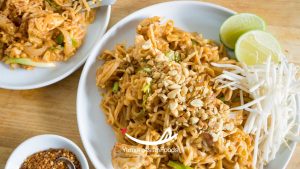
Wok Away: Enjoy Your Homemade Pad Thai!
As you take your first bite of the homemade Pad Thai that you’ve whipped up in your own kitchen, savor the flavors dancing on your taste buds. The perfect balance of sweet, spicy, and tangy notes in this iconic Thai dish will transport you to the bustling streets of Bangkok or Chiang Mai. With each bite, feel a sense of accomplishment knowing that you’ve successfully recreated a beloved recipe right at home.
Don’t be afraid to experiment with different variations of Pad Thai to suit your preferences. Whether it’s adding more vegetables for a healthier twist or incorporating tofu or shrimp for added protein, let your creativity shine through in the kitchen. Embrace the art of cooking and take pride in creating a dish that not only nourishes but also brings joy to those who indulge in its delectable flavors.
So go ahead, gather your ingredients, follow the simple steps outlined earlier, and dive into the wonderful world of homemade Pad Thai. Let this dish be a reminder that great food doesn’t always have to come from restaurants; sometimes, it can be as simple as what you make with love and care in your very own kitchen. Enjoy every mouthful and relish in the satisfaction of mastering this classic Thai favorite!


